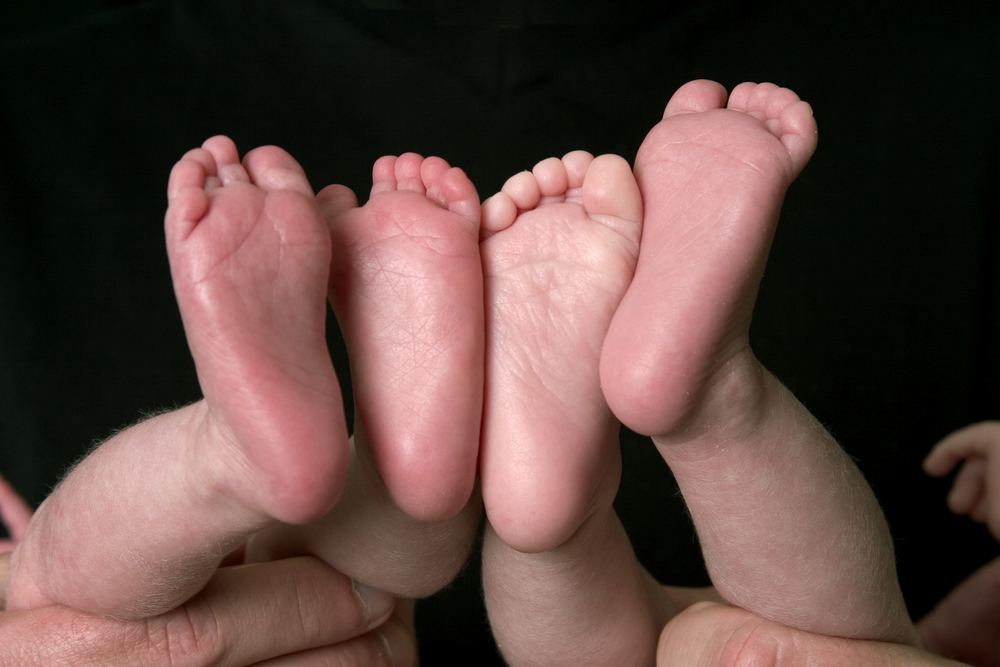Why the Gene-Edited Babies Will Never Have Genetic Privacy

The reported birth of two gene-edited baby girls in China has created a slew of ethical quandaries, with geneticists the world over appalled at the decision to bring human gene-edited embryos to term without far more research on safety.
But there is another, little-discussed ethical problem afoot: The children's genetic privacy. As in, they likely won't have any.
"People are going to want to see the children," said Kelly Hills, a bioethicist at the consulting firm Rogue Bioethics. And while scientists can try to keep their real names under wraps, the children's genetic information is likely to be shared if the researchers hope to prove that they did what they said they did. And that genetic information alone is often enough to identify a person by name. [Genetics by the Numbers: 10 Tantalizing Tales]
Genetic privacy?
The easiest way to understand the quagmire of privacy issues surrounding DNA is through the story of a serial killer in California. The Golden State Killer committed a number of rapes and murders throughout the 1970s and 1980s. He left behind DNA evidence at the scene of some of the crimes, but the genetic sequences never matched anything in police databases.
The advent of direct-to-consumer DNA sequencing changed the game. Police used genetic sequences uploaded to the website GEDmatch to find distant relatives of the person who left the crime-scene DNA. From these matches, searchers constructed a sprawling family tree, which they used to pluck suspects, narrowing down their list by choosing those who were of the correct age and gender to be the killer. This was enough to target 72-year-old Joseph James DeAngelo, whose DNA (found on a discarded item of trash) turned out to match the killer's, police said. DeAngelo's trial is upcoming.
But DeAngelo never took a DNA test himself. The relatives who submitted their DNA to a database likely never dreamed it would be used to identify one of their family members by name (much less to peg him as a serial killer). But multiple studies have found that it's possible to use DNA databases to identify people who have never taken a DNA test. In October, researchers reported in the journal Science that 60 percent of Americans of European descent can be linked to a third cousin or a closer relation in open-source genealogical databases. Much like the Golden State Killer, these Americans can then be personally identified using publicly available demographic information.
When people submit their DNA directly, the task of identifying them is often even easier. In one 2013 study, researchers used public records and genetic information uploaded to the Personal Genome Project to put names to 84 percent to 97 percent of "anonymous" genetic profiles. In another study that same year, scientists used small segments of DNA from the Y sex chromosome and public records to discover the surnames of the people who had provided the gene sequences.
Get the world’s most fascinating discoveries delivered straight to your inbox.
Public life
If the scientific process goes as it ordinarily should, the gene-edited twins in China will likely have a lot of their genetic information released, said Kiran Musunuru, an associate professor of Cardiovascular Medicine and Genetics at the Perelman School of Medicine at the University of Pennsylvania. The lead scientist on the project, Jiankui He, presented preliminary information today (Nov. 28) at the Second International Summit on Human Genome Editing in Hong Kong. That presentation included some genetic data revealing the mutations that researchers had engineered using a method of DNA editing called CRISPR. The research is also under review at a scientific journal, He said.
It's unclear exactly how much of the twins' genome will be publicly revealed. Full proof that the gene editing worked as advertised would involve full genetic sequences of both the babies and their parents, Musunuru told Live Science. Based on He's Hong Kong presentation, it appears such sequencing may have been done.
"If this goes the way it ordinarily should, the scientific community would want access to the genetic data," Musunuru said. But, even if the genetic data was given to well-meaning scientists, he added, "I don't know how you wouldn't stop, in the long run, being able to take that data and compare it against databases" to identify the children.
It's an issue that bioethicists and scientists have yet to fully solve, Hills told Live Science. In some circles, she said, there are proposals to keep certain sensitive genetic information private by only opening that data to a few peer reviewers and journal editors. The data would then be left out of the widely available papers. So far, Hills said, policies like that are almost never used.
He said in Hong Kong that he plans to track the children's health at least until age 18. That tracking is important, given the possibility of nasty side effects from gene editing, Hills said. But the ongoing study makes it even less likely that the children will have a private life. He also claimed that another pregnancy with a gene-edited embryo is underway, raising the same privacy problems for that potential child.
"They're going to have – at least until the novelty wears off, and who knows how long that's going to be – a very public life," Hills said.
- 10 Amazing Things Scientists Just Did with CRISPR
- Bionic Humans: Top 10 Technologies
- Unraveling the Human Genome: 6 Molecular Milestones
Originally published on Live Science.

Stephanie Pappas is a contributing writer for Live Science, covering topics ranging from geoscience to archaeology to the human brain and behavior. She was previously a senior writer for Live Science but is now a freelancer based in Denver, Colorado, and regularly contributes to Scientific American and The Monitor, the monthly magazine of the American Psychological Association. Stephanie received a bachelor's degree in psychology from the University of South Carolina and a graduate certificate in science communication from the University of California, Santa Cruz.


